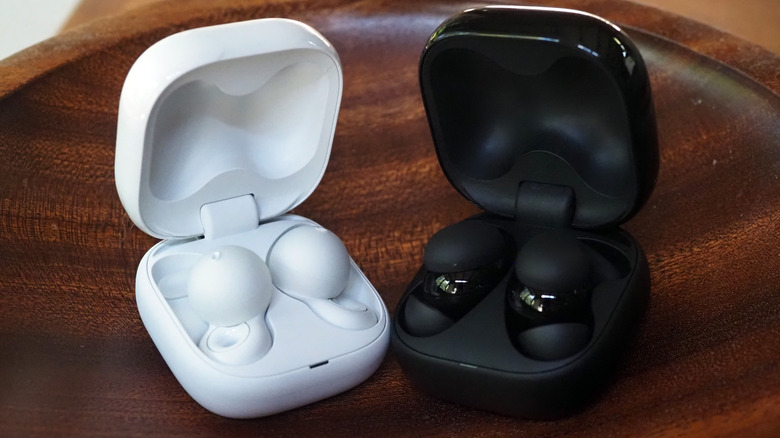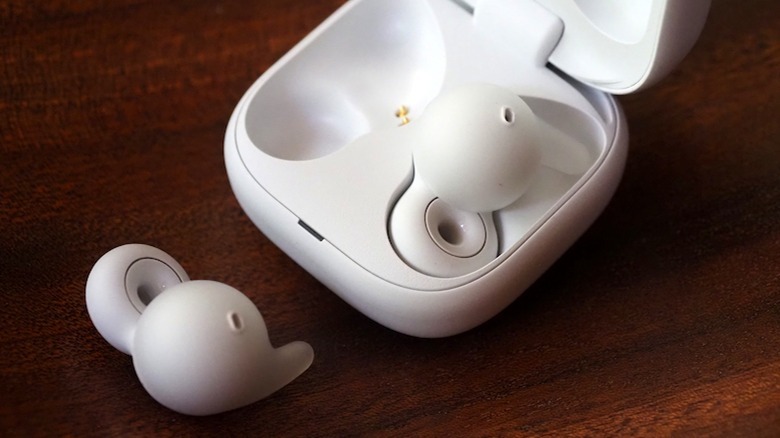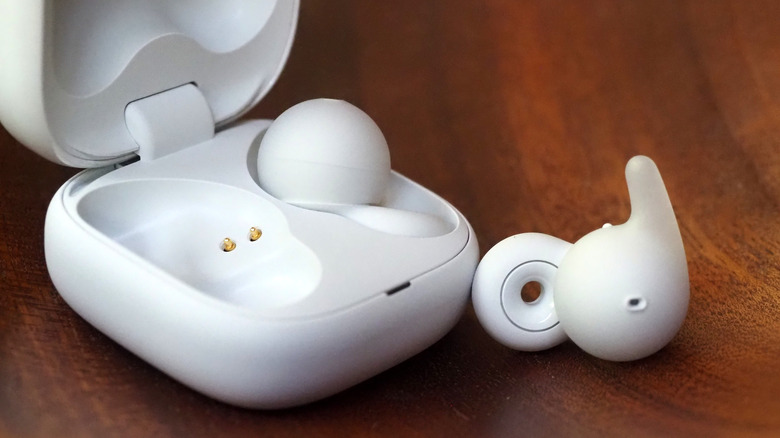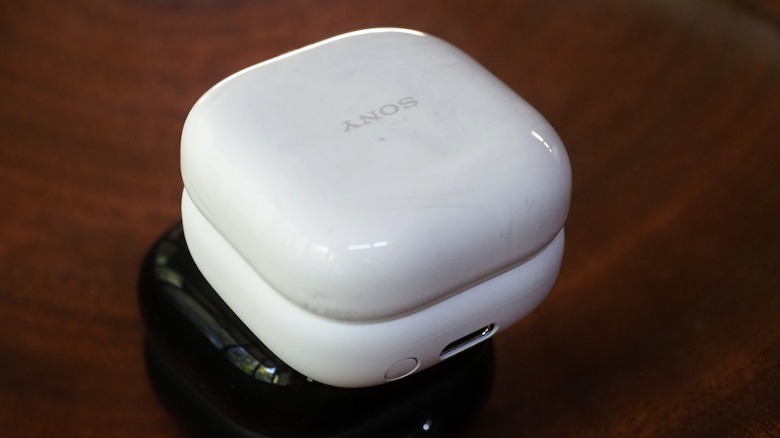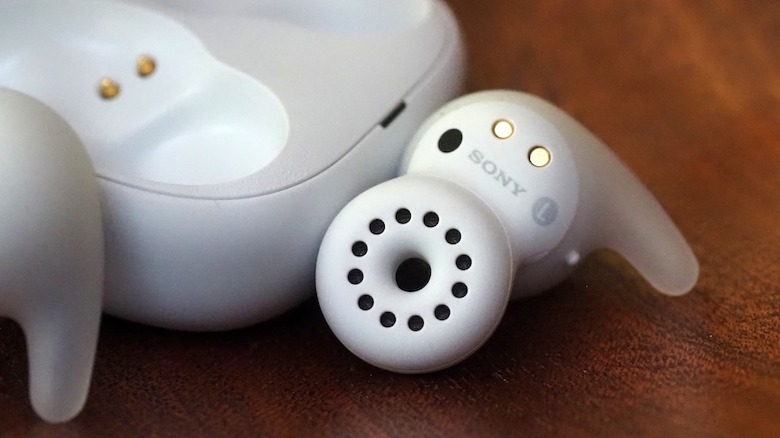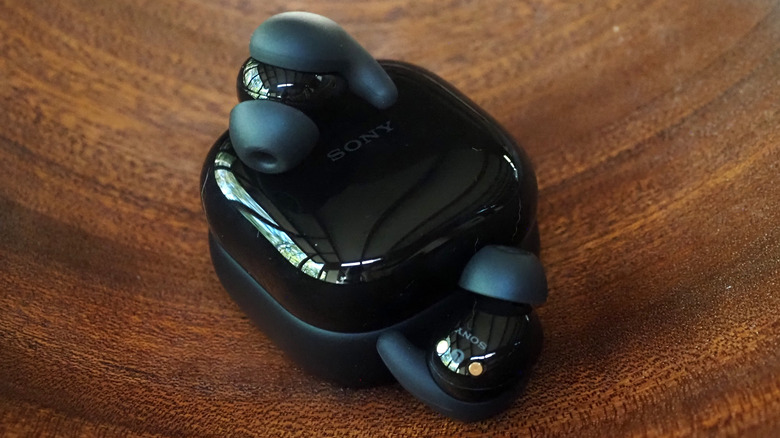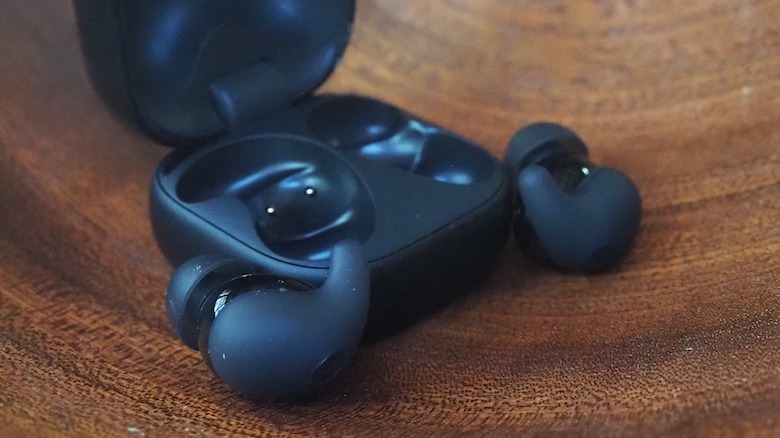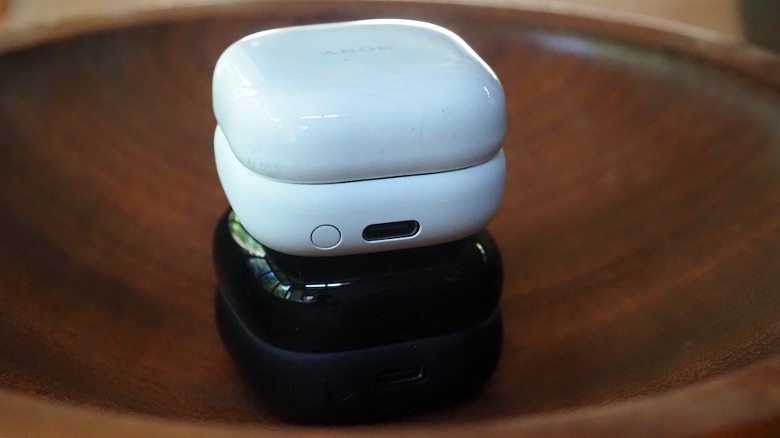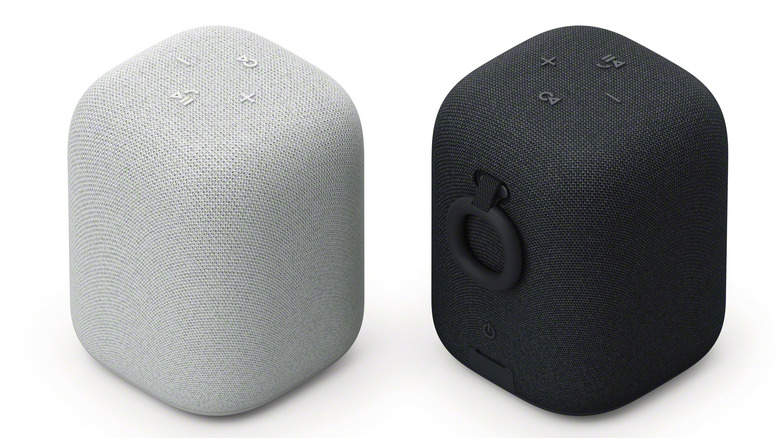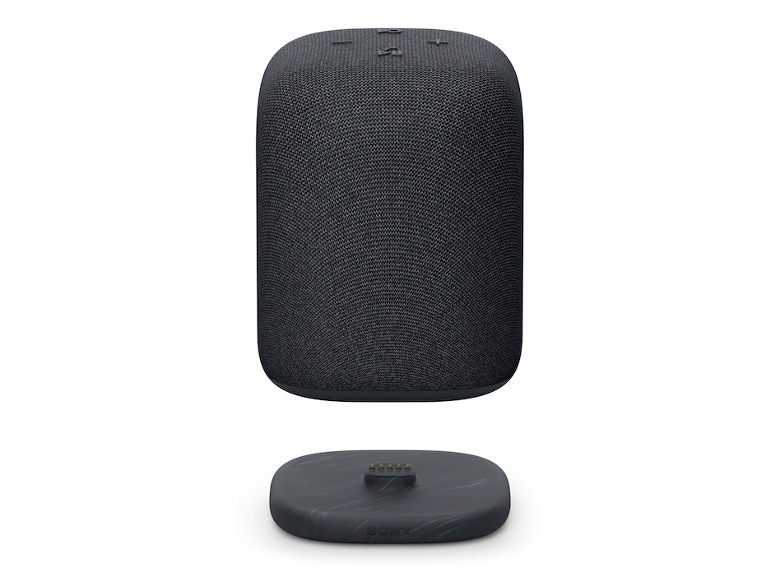Sony LinkBuds Open & Fit First Look: AirPods Rivals Count On Fit To Make The Difference
Sony is giving its LinkBuds earbuds range an upgrade for 2024. While the new LinkBuds Open may cause some confusion with their donut-shaped body, and the LinkBuds Fit draw comparisons with Apple's AirPods Pro, it's a little rubber nubbin that might make the biggest difference. Each priced at just shy of $200, the AirPods rivals continue Sony's approach of playing nice with both iPhone and Android. Compared to Apple's buds, though, the rubber protuberance could be what wins wearers over.
It's a welcome update: the snug little fin of Beats' Fit Pro are why they're still my go-to earbuds. Sony's silicone supporter is less firm than the Beats version, however, being filled with air rather than solid rubber. It left the earbuds feeling a little less stable in each ear, though still much preferable — to my tastes, anyway — than a beefier ear tip that has to wedge into the ear canal to stay in place.
The upside to Sony's design is that the silicone supporter is removable and replaceable; there'll be a range of colors, at $9.99 per set. Sony will also offer silicone case covers, at $19.99, with support for mixing and matching the top and bottom cover individually. Select cases — which have a USB-C charge port on the back, though don't support wireless charging — will have marble patterning, where different plastics are mixed during molding and allowed to swirl into a unique finish.
Sony LinkBuds Open still look weird, but they work
Like Sony's old LinkBuds, launched in 2022, the distinction of the new $199.99 LinkBuds Open is the hole. The punctured earpiece takes a contrary approach to most earbuds — which try their best to keep external noises at bay — by welcoming in some degree of ambient sound. It's a reflection, Sony says, of the fact that many people now wear their earbuds almost constantly, whether they're commuting, at the office or simply walking around.
For the LinkBuds Open, the earbuds themselves are reshaped and smaller. In addition to the silicone supporter — which helps get the positioning right in your ear, as well as ensuring a more snug fit — there's an upgraded driver paired with the newer Integrated Processor V2. The result, Sony says, should be more bass and a generally louder earbud. Just to make sure the hole is positioned right, a new "wearing check" in the app uses a photo of your ear to make sure everything is in the correct place.
Side by side with the old LinkBuds, the 2024 version did a better job of drowning out external sound when it was music I wanted to focus on. There's also an uptick in battery life — now eight hours from the earbuds themselves, and 22 hours with the case, an increase of 2.5 hours and 4.5 hours respectively — while three minutes in the case is enough for 60 minutes of play time from each earbud. Simultaneous multi-device connection has been made more stable, Sony says, and there's now IPX4 splash resistance, along with Bluetooth 5.3 with support for SBC, AAC, and LC3 streaming.
LinkBuds Fit play better with ambient sound
The new LinkBuds Fit ($199.99), in contrast, are far more mainstream earbuds. Successor to the LinkBuds S — which will remain on sale — they also have redesigned and smaller bodies, plus a new, shorter ear tip. Thanks to the silicone supporter, Sony says its truncated tip doesn't sacrifice stability in the ear. At the risk of sounding like a broken record, I found that relying less on gripping the ear canal for stability definitely extended how long I could wear the LinkBuds Fit before they got uncomfortable.
As with the LinkBuds S, there's active noise cancellation, but Sony has upgraded the ambient sound mix to make it more natural, and added auto optimization. When I was in a louder room with lots of background noise, the earbuds automatically cranked down the amount of ambient sound making it through to my ears. Like the LinkBuds Open, there's a new Dynamic Driver X and the second-generation processor, while an auto noise-cancelling optimizer promises to customize the levels of isolation individually.
An IPX4 rating, the same bolstered multipoint support, and Bluetooth 5.3 are all included as with the other new earbuds. The smarter processing and smaller design, though, does have a slight hit on battery: Sony says to expect 5.5 hours of playtime from the buds, versus six hours from the LinkBuds S; though with the case, the LinkBuds Fit's 21 hours total is an hour more than their predecessors can manage.
LinkBuds Speaker wants to make a music ecosystem
Finally, Sony is launching a new speaker in the same range. The LinkBuds Speaker ($179.99) is a compact, fabric-covered block, which recharges its battery on a wireless dock (or via a USB-C port on the speaker itself). Sony says it'll deliver up to 25 hours of playback, volume depending, and 10 minutes charging is good for over an hour of play. There's IPX4 splash resistance and a built-in hook for more flexibility in positioning.
What singles the LinkBuds Speaker out, though, is Auto-Switch. If you're listening to music on LinkBuds Fit, Open, S, or the WH-1000XM5 or WF-1000XM5 headphones or earbuds, playback can be seamlessly switched between them and the speaker from the same source. There'll be routines programmable in the updated Sound Connect app to automatically shift music from speaker to earbuds, and vice versa. It works based on recognizing the Bluetooth source device paired to the LinkBuds device, as does the Quick Play button on the LinkBuds Speaker which can start a preset playlist with one press.
Inside the speaker there's a woofer, a passive radiator, and a tweeter, plus a microphone on top for hands-free calls. Sony didn't supply the LinkBuds Speaker, so I can't say how it sounds, or how well the Auto-Switch works. Sony's also not committing to necessarily supporting Auto-Switch on every future headphone or earbud launch, so only time will tell which future models will play nicely with the fast-swapping system.
